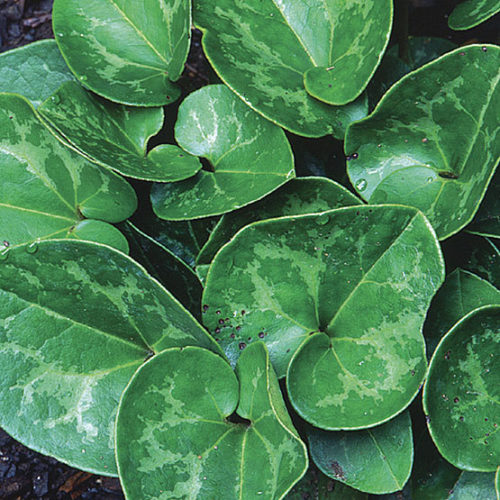Wild Ginger: A Timeless Treasure
Wild Ginger emerged from the shaded woodlands of North America and quickly became notable because of its unique growth pattern and underground rhizomes. The first groups to identify the plant's potential were Indigenous tribes located within the eastern regions of the United States. Its fragrant properties allowed Indigenous cultures to use it for ceremonial applications as well as for medicinal preparations and as a gentle seasoning. The plant's potential was first documented by European settlers who discovered it and integrated it into their herbal remedies. It grew to play a crucial role in traditional medicine and garden designs while maintaining its status as a historically important plant.
The Healing Properties of a Wild Ginger
As soon as it was discovered people recognized its therapeutic benefits. Native healers administered this plant to address digestive disorders as well as cold symptoms and respiratory problems. People dried and ground its rhizomes into powder, which they believed helped alleviate nausea and enhance blood flow. Different tribes prepared warming tea by steeping the roots in water while other tribes created poultices from the same roots to treat wounds and infections. People preferred the plant to clear congestion and soothe sore throats because of its aromatic properties. Herbalists and early physicians during the 18th and 19th centuries prescribed this natural remedy for various medical conditions. Modern medicine has mostly taken over, but research into the plant still examines its historical uses and prospective advantages.
A Low-Growing Jewel in the Landscape
Gardeners value Wild Ginger because it provides dense ground cover in shaded areas where most plants cannot flourish. The plant produces dense carpets of rich deep green foliage which makes it highly suitable for erosion control and woodland landscaping. Among shade-tolerant plants It is unique for maintaining its green leaves throughout the year in mild climates which creates continuous visual appeal. The plant flourishes under the shelter of tree foliage while adding visual interest to shaded trails and native plant gardens through its distinctive leaf shapes that stand out against mosses and ferns. Gardeners appreciate this plant for both its striking appearance and its durable nature which demands minimal upkeep. This plant needs minimal care once established so it works well in naturalized landscapes.
Wild Ginger is a Hidden Treasure
People who examine the plant closely will discover that it blooms present an intriguing display beyond their popular foliage. The heart-shaped leaves display a glossy finish which reflects light effectively even in the dark forest areas. The flower stands as the plant's most captivating characteristic because it stays concealed under the leaves. The plants have small bell-shaped flowers that appear deep maroon or brown which blend naturally with the forest floor. The flowers do not attract pollinators through bright colors like traditional flowers but instead adopt another approach. The distinct form and aroma of these flowers serve ground-dwelling insects which contributes to their essential function within the forest ecosystem. The plant’s mystique grows through its understated beauty which rewards careful exploration of its subtle charm.

Wild Ginger might appear ordinary, but it performs essential functions in maintaining populations of rare wildlife species. The plant produces flowers that give off a faint but distinctive smell that attracts ground-based pollinators, such as specific beetle and fly species, that are usually missed in mainstream pollinator research. The thick leaves of this plant offer refuge to tiny woodland animals including salamanders and frogs who benefit from its cool and damp habitat which is ideal for their survival. Certain types of ants are attracted to the plant's rhizomes because they help disperse seeds which allows the species to spread across the forest floor. It plays a crucial role in supporting native ecosystems through its hidden yet meaningful assistance to plant and animal life. The presence of this plant in shaded gardens and woodlands highlights the intricate and interdependent connections that define natural ecosystems.
Wild Ginger Is A Lasting Botanical Treasure
Wild Ginger holds great significance because of its traditional medicinal applications and its esteemed position in landscaping. The combination of its resilience, aesthetic beauty and ecological significance ensures that this plant becomes an esteemed component for both domestic gardens and natural habitats. The heart-shaped foliage of the plant and its hidden blossoms together with its capacity to support rare wildlife keeps captivating people who find joy in nature's marvels. This enduring treasure demonstrates that beauty and function can coexist in perfect harmony for gardeners and conservationists who are searching for sustainable and native plant options.